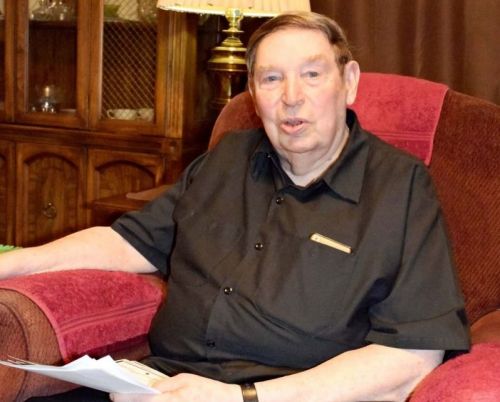US Army veteran gives interview on 1959 Naha accidental nuke missile firing

Robert Roepke in Wisconsin speaking about the accidental firing of a Nike Hercules missile from U.S. Naha Air Base in June 1959.
October 26, 2017 Ryukyu Shimpo
Washington Special Correspondent Yukiyo Zaha reporting
On June 19, 1959, a Nike Hercules surface-to-air missile equipped with a nuclear warhead at US-controlled Naha Air Base was accidentally ignited and fired due to a maintenance error, and ended up submerged in the ocean.
A former U.S. Army Nike Hercules missile maintenance man who was at Naha Air Base during the incident, now 81-year-old Robert Roepke of Wisconsin, provided his account in an interview with Ryukyu Shimpo.
Roepke said that just before the missile was fired a blue-alert had come down.
This meant the battery was preparing for potential missile launch due to a perceived threat.
The Nike Hercules battery to which Roepke belonged recognized that even after the incident occurred, another missile, this one equipped with high explosives, was being made ready for launch.
Roepke first made details of this accident public this September during the broadcast of an NHK special titled Okinawa and U.S. Nuclear Weapons (Okinawa to Kaku).
According to Roepke, the accidentally fired missile contained a warhead similar in size and yield to the atomic bomb dropped on Hiroshima.
While the missile equipped with high explosives was topside, a stand down order came through the chain of command.
One soldier was immediately killed due to the accidental firing, and another died a week later.
The National Personnel Records Center (NPRC) of the National Archives at St. Louis, Missouri, has the Nike Hercules battery’s daily reports for safekeeping.
On June 19 that year, the report recorded the cause of the soldier’s death as “ignition of a Nike Hercules missile.
” This accident could have resulted in a catastrophe, but the U.S. military announced no detail of the incident and had the missile recovered from the ocean in secret.
The battery’s daily records on the next day and onward note duties being executed as usual.
At that time Roepke was in charge of missile assembly and maintenance.
He said that after the incident the battery received communiqué from incident investigative teams belonging to organs like the Department of Defense and the Central Intelligence Agency.
However, the incident was kept secret, and those involved were forbidden to disclose anything about the accident.
During the Cold War, U.S.-occupied Okinawa bore a large quantity of U.S. nuclear weaponry.
This lasted between the mid-1950s and 1972, when Okinawa was returned to Japanese sovereignty.
The Department of Defense announced for the first time in 2015 that the U.S. had possessed nuclear weaponry in pre-return Okinawa.
Former U.S. soldier details account of 1959 Naha accidental nuke firing fatal to fellow soldiers
(English translation by T&CT and Erin Jones)
Previous Article:Former US soldier details account of 1959 Naha accidental nuke firing fatal to fellow soldiers
Next Article:Ministry of Defense confirms plan to resume flights of the U.S. military accident aircraft
[Similar Articles]
- Former US soldier details account of 1959 Naha accidental nuke firing fatal to fellow soldiers
- Removal of Cold War-era US nuclear base almost complete
- Okinawa Police determine broken farm shed windows caused by stray bullet
- Parts of US Marine helicopter weighing 200 kilograms falls near Tonaki
- Editorial: Sixty years after Miyamori Elementary School plane crash, the dangerous conditions have not changed
 Webcam(Kokusai Street)
Webcam(Kokusai Street)


